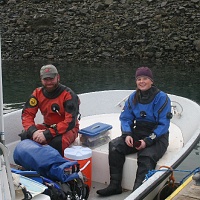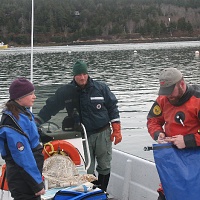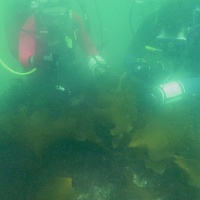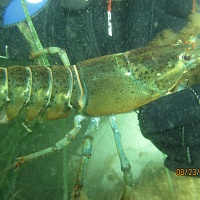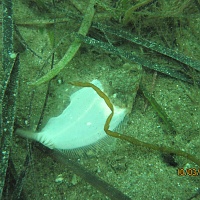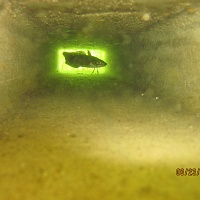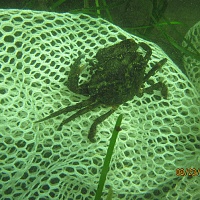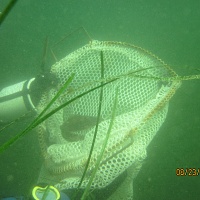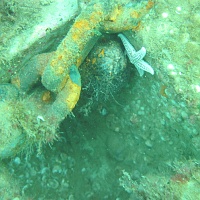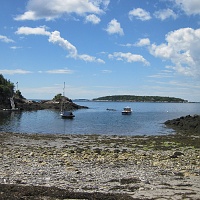An Artificial Reef with mooring function
Habitat moorings provide refuge cavities and tunnels that attract numerous species of fish and crustaceans, plus bio friendly wall surfaces that support myriad aquatic plants. This oasis effect has been extensively documented at two locations on the Maine coast by Christopher Roy, a Graduate Student at The University of Maine.
In a series of dives spanning 2012 and 2013, Chris and his University of Maine colleagues studied Habitat Moorings at Seal Harbor, on Mt. Desert Island, and Sand Cove, near South Bristol. The team catalogued over 50 species of marine animals and plants aggregating on the moorings. Moreover, the Habitat Moorings showed vastly more marine life and biodiversity than control granite moorings that were located nearby.
Two seasons of field research along the Maine coast
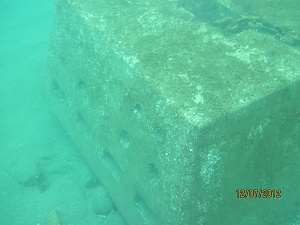
Over 50 species recorded to date.
This list comprises the marine plants and animals observed on Habitat Moorings in 2012 and 2013. It was compiled by Chris Roy, a graduate student at the University of Maine and Dr. Ian Bricknell, Professor of Aquaculture Biology, at The University of Maine.
Vertebrates
- Atlantic Cod
- Rock Bass
- Pollack
- American Eel
- Mackerel
- Flounder
- Atlantic Hake
- Sculpin
- Cunner
- Lumpfish
- 3 species unidentified fish
Invertebrates
Crustaceans
- Lobsters
- Crabs (7 species)
- Barnacles (4 species)
Echinoderms
- Sand Dollars
- Star Fish (3 species)
- Green Urchins
- Sea Cucumber
Encrusting Animals
- Orange Sponge
- Hydroids
- Byrozoans
- Serpulid Worms
- Coelenterates
- Plumrose Anemones
- Sea Anemones
Sea Squirts
- Colonial and Sessile
Bivales
- Mussels (2 species)
- Scallops
- Surf Clam
- Oyster
Gastropods
- Slipper Limpets
- True Limpets
- Periwinkle
- Sea Slug
- Whelk
Macro Algae
- Sweet Kelp
- Ulva (Sea Lettuce)
- Dulse
- Entromorpha Species
- Corraline algae





